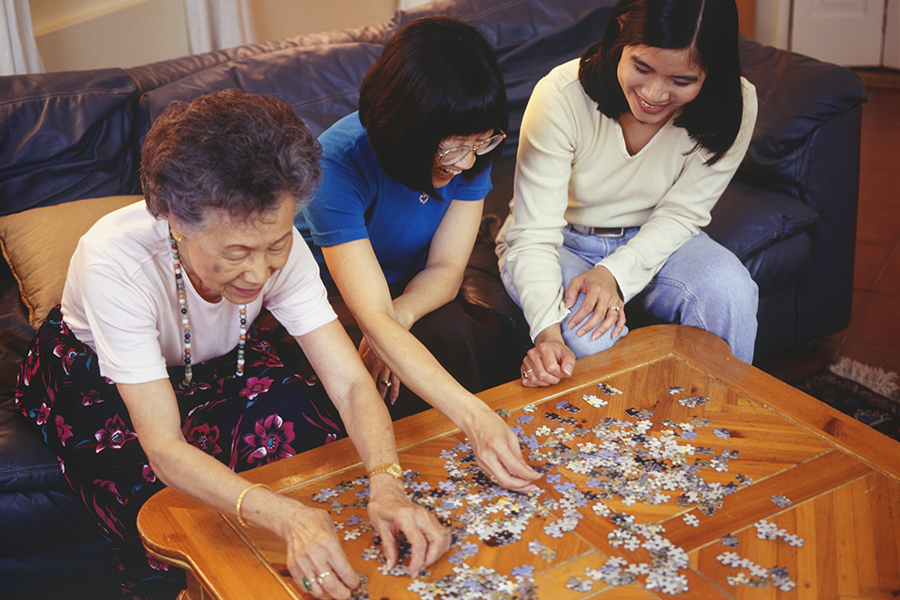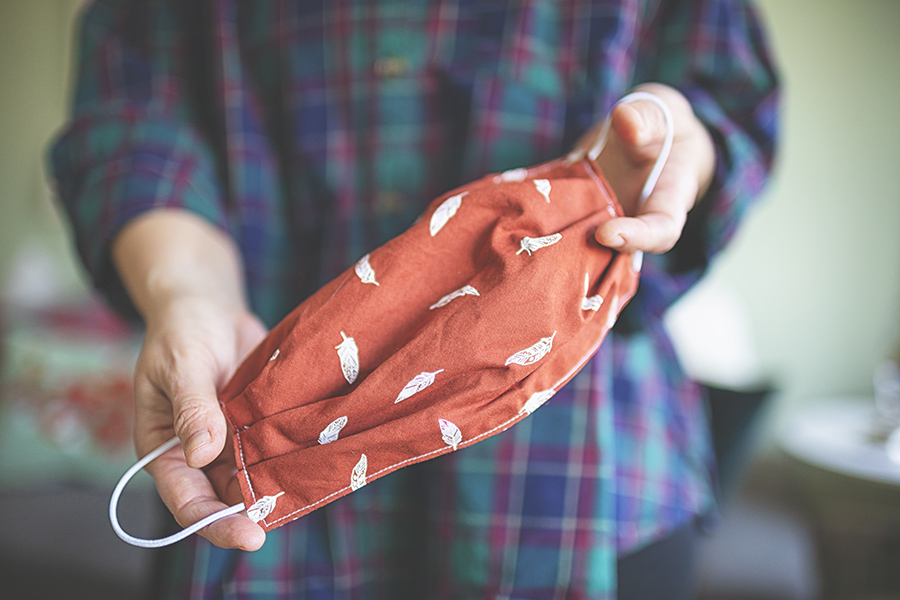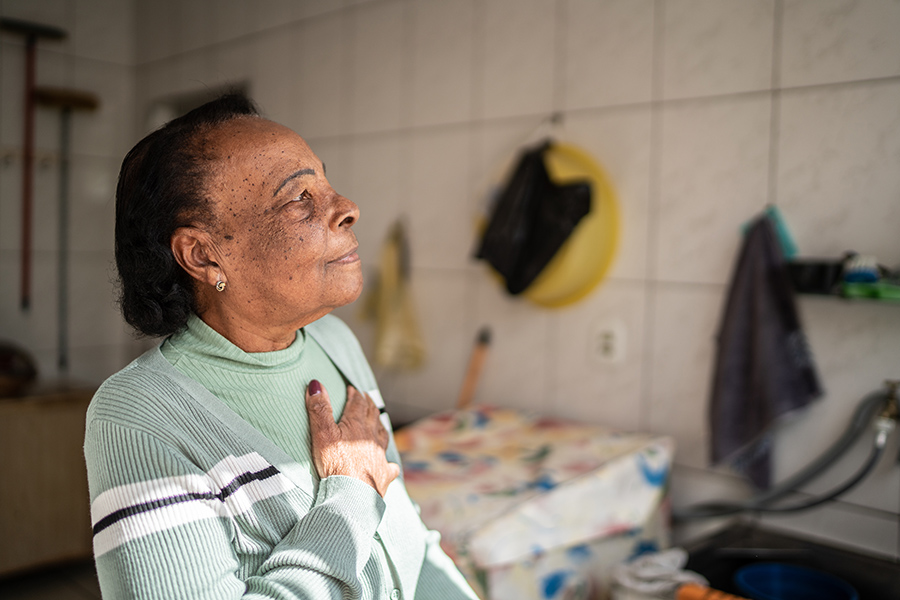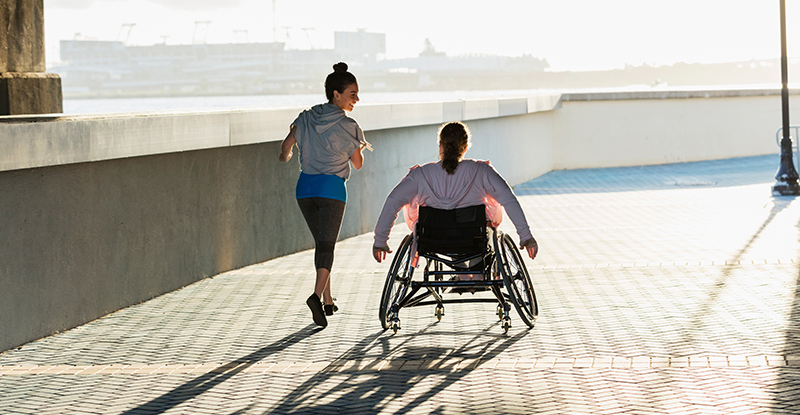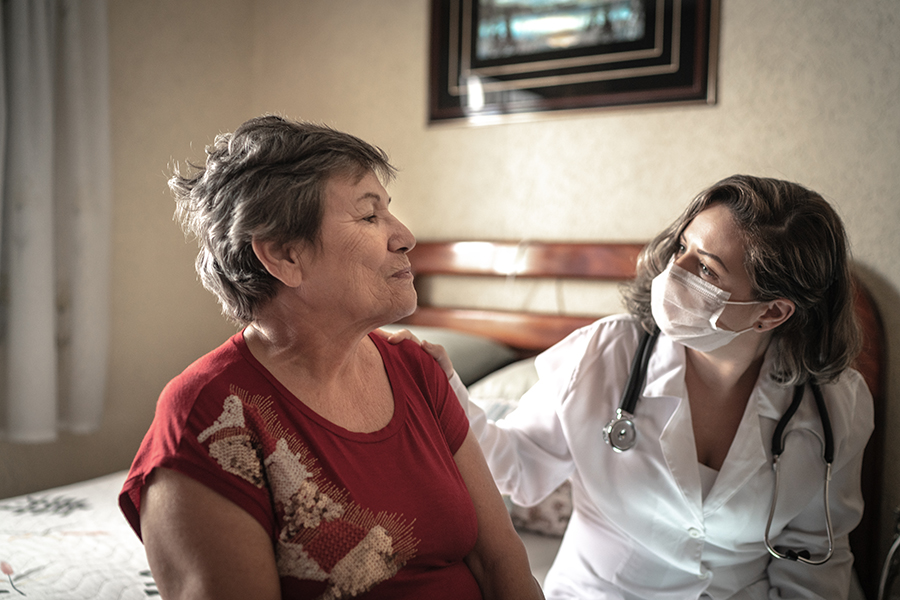Approximately 90 million caregivers in the U.S. are providing in-home care for a family member or friend who is elderly, disabled, or ill with a chronic condition. Managing incontinence for a loved one can be difficult; incontinence is among the top three reasons that families stop providing home care and place a loved one in a nursing facility. Whether you are new to caregiving or an experienced caregiver, getting a handle on incontinence may seem overwhelming. Here are 4 helpful tips for managing incontinence for a loved one at home.
 Discuss Incontinence with your Loved One/Person you Care For
Discuss Incontinence with your Loved One/Person you Care For
There is no easy way to discuss incontinence. It can be distressing and embarrassing to deal with at first, causing caregivers and their loved ones a great deal of anxiety. As a caregiver, your role is to be helpful – and it helps to be seen as an advocate, not an adversary. Try to approach the subject with a casual, empathetic and matter-of-fact approach. It is important to remember that incontinence isn’t about obstinance, spite or lack of control; it is a medical issue.
Before you begin, know your goal going into the conversation: the first step in managing incontinence involves getting the problem assessed by a physician. There can be many causes of incontinence, including urinary tract infections, medications and prostate problems, and in many cases incontinence can be treated and improved. By having a medical professional assess and diagnose the condition, you are not only ensuring that your loved one will get appropriate treatment – you are also positioning yourself as a supporter.
 Discuss Incontinence with their Health Care Provider
Discuss Incontinence with their Health Care Provider
Incontinence is a common condition, affecting approximately 25 million adult Americans. Surprisingly, two-thirds of individuals age 30-70 have never discussed bladder health with their doctor. Incontinence should be discussed with a health care professional, such as your loved one’s physician. The health care professional will discuss the symptoms, and may order tests or refer him or her to a specialist before making a diagnosis. Once a diagnosis is made, treatment options can be recommended that will help manage symptoms and improve your loved one’s quality of life. These treatment options may include diet changes, environmental changes, Kegel exercises, adding or removing medications, bladder retraining, surgery or absorbent products.
 Make Small Changes Around the House
Make Small Changes Around the House
Environmental changes in the home can help reduce accidents and improve incontinence management. Individuals who have difficulty getting out of a chair or bed may strain to do so, putting pressure on the bladder. Adding sturdy arms or rails next to the chair or bed can help the person stand up without straining. Lift chairs may also be an appropriate option to help a loved one stand up with little effort.
A clear path to the bathroom can also help to reduce incontinence episodes – as well as reduce risk of falls that can happen while rushing to the bathroom. Walk the most direct path that your loved one will take to the bathroom, and remove any clutter, furniture or rugs that may be obstacles. Check to see that there is appropriate lighting on the path to the bathroom. Strategically-placed night lights or glow-in-the-dark tape can help light the way to the bathroom at night.
 Keep a Schedule
Keep a Schedule
Keep a written log of trips to the bathroom. Every time that your loved one goes to the bathroom, jot down the time of day and the amount they urinated (small, medium or large amount). This will enable your loved one to develop a pattern, and can help you set a bathroom schedule that meets his or her physical needs and reduces accidents. This will also provide you with an incontinence “journal” to show your loved one’s health care provider.
A good beginning schedule is to make a trip to the toilet first thing in the morning, followed by a bathroom trip every 2 hours throughout the day. Bathroom trips are also recommended right before meals or an activity. Over several weeks, gradually increase the time between bathroom trips, until you feel comfortable that the schedule meets your loved one’s needs. On each trip, be sure to give him or her enough time to completely empty the bladder. A partially empty bladder can increase a person’s risk for developing a UTI (urinary tract infection), as well as increase risk of an incontinence episode.
More Articles Related to Incontinence and Caregiving:
- Video: 7 Expert Tips About Incontinence
- Aging in Place Considerations
- Parent with Incontinence? Here Are Some Helpful Tips
- You Know You Are a Family Caregiver When…
- The Relationship Between Incontinence and Accidental Falls
Source information provided by the National Association for Continence, Caring.com and The Caregiver Partnership.
Shield HealthCare | Stronger with Shield






